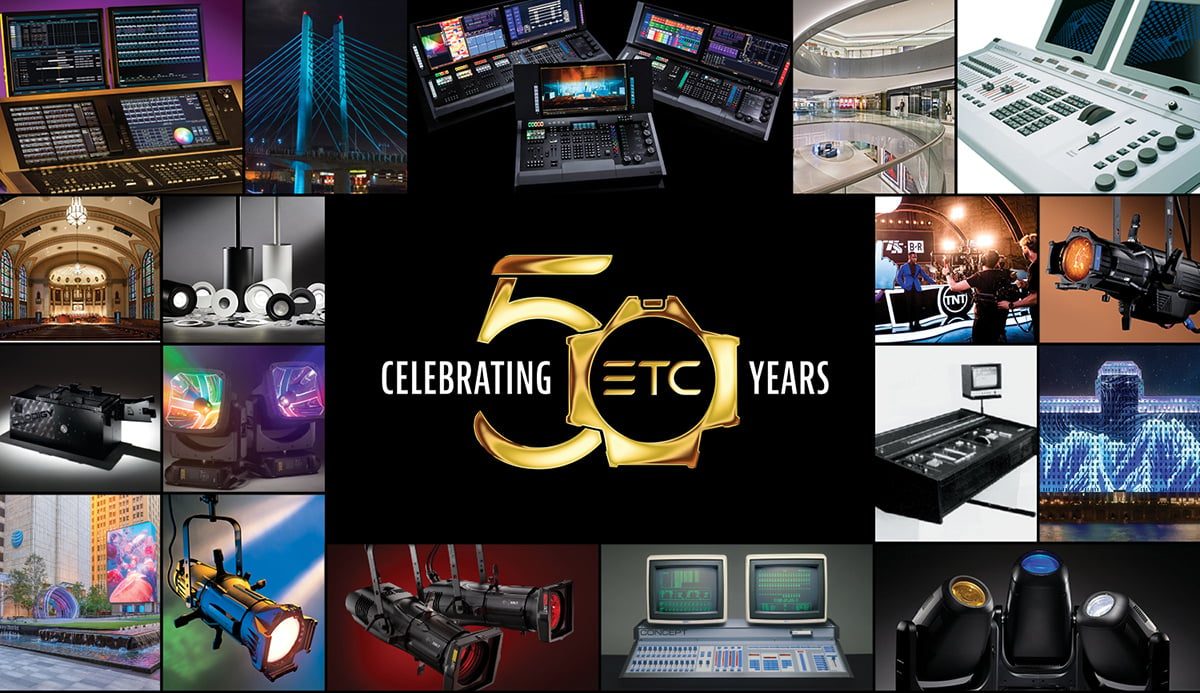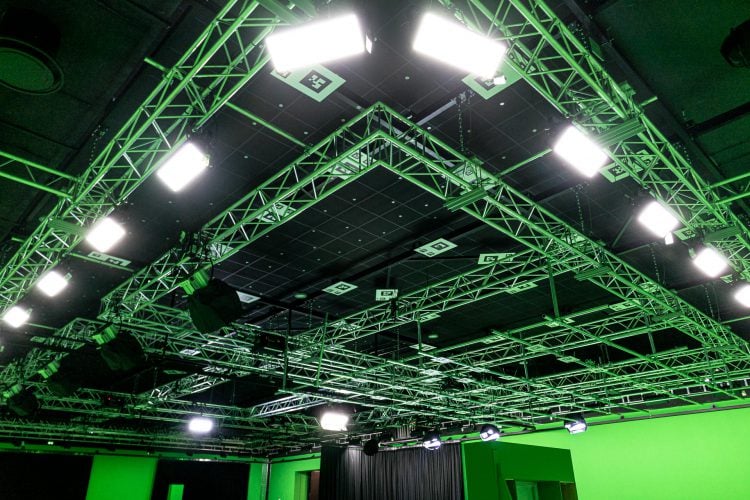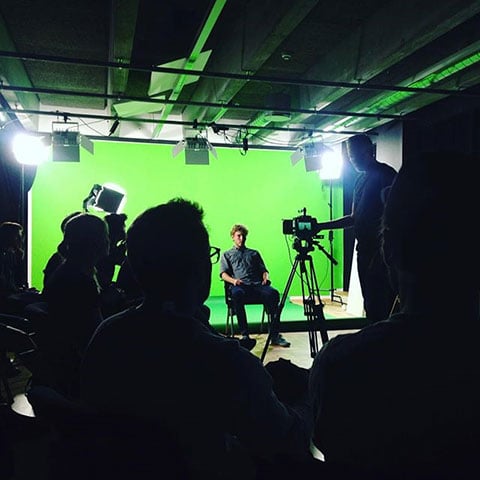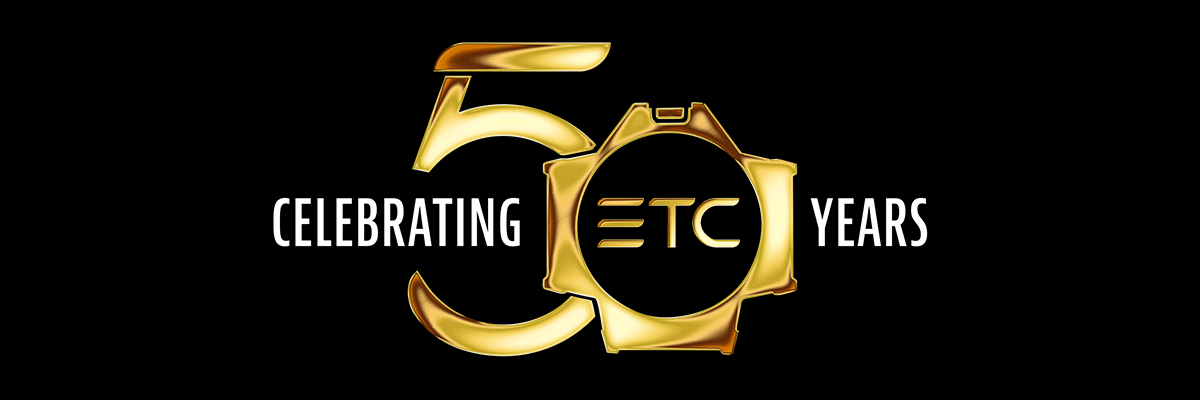From a handmade lighting console built in a Madison garage to cutting-edge fixtures illuminating some of the world’s most iconic stages, ETC’s product journey over the last 50 years is a story of passion, creativity, and constant reinvention. As we celebrate ETC’s 50th anniversary, we’re taking a moment to look back at the products that have defined our company, shaped the lighting industry, and inspired generations of designers, technicians, and performers.
The First Spark
ETC was founded in 1975 by four University of Wisconsin students determined to create a better – and more affordable – lighting control console. That vision quickly took shape. Within two years, ETC introduced the Mega Cue: a memory-based lighting console that gave theatre operators real control without unnecessary complexity. The Mega Cue wasn’t just a product, it was a sign that things were about to change.
By the early 1980s, ETC had already begun to rewrite expectations. The Concept console followed, offering a new level of programmability that set the foundation for what lighting control could become. This early innovation caught the attention of professionals across the industry and helped cement ETC as a company to watch.

Building a Console Legacy
Consoles have always been central to ETC’s identity. In the early 1990s, the launch of the Obsession console marked a major advancement in theatrical control. It was ETC’s first tracking console, designed with input from Broadway professionals to meet the demands of complex productions. Obsession quickly became a trusted tool in high-end venues, helping establish ETC as a serious player in the marketplace.
In 2006, ETC took another ambitious leap with the introduction of the Eos family. Representing a complete reimagining of what a lighting console could do, Eos featured an intuitive interface, a powerful cueing engine, and tools designed with lighting professionals in mind. It soon became the new standard for professional control, powering productions from the National Theatre in London to the Metropolitan Opera in New York.
Over time, the Eos family continued to grow – not just in capability, but in accessibility. Consoles like Ion and Ion Xe brought Eos performance to mid-sized venues, while Element offered schools, community theatres, and churches an affordable way into the family. Meanwhile, Congo and ColorSource consoles further expanded ETC’s offerings, making professional-grade control available to even more users.

Since 2017, ETC’s commitment to control has included the Hog family of consoles, widely recognized for its role in touring and concert lighting. Known for speed, flexibility, and reliability under pressure, Hog remains a trusted choice for live event productions worldwide.
Today, Eos Apex carries the legacy forward with sleek hardware, advanced programming tools, and reliability for even the most complex shows. Yet across the entire ETC console lineup, one principle remains constant: every tool is built by people who understand the pressures of live production and the needs of those working behind the scenes.

The Introduction of Source Four
In 1992, ETC changed the industry again – this time, with a fixture. The Source Four redefined what designers expected from an ellipsoidal spotlight. With its precision optics, interchangeable lens tubes, and dramatically improved efficiency, Source Four delivered a beam quality that quickly became legendary.
Compact, rugged, and easy to maintain, the Source Four was a breakthrough not just in performance, but in practicality. It soon became a go-to tool across every kind of venue, from high schools to Broadway houses. To this day, it remains one of the most widely used theatrical fixtures in the world.
The Source Four family didn’t stop there. Over the next several years, ETC added new models including PARs, Zooms, jrs, and HID variants. Eventually, the Source Four LED Series brought the classic profile into the modern era – with Series 3 introducing even deeper red rendering and advanced color mixing for the most demanding applications.
In 2009, ETC acquired Selador, a pioneer in LED lighting technology. The Selador line introduced innovative approaches to color mixing and high-output LED fixtures, laying the groundwork for ETC’s future in LED development. Elements of that technology helped shape the Source Four LED and Desire families, advancing ETC’s commitment to color quality and optical performance.
Other fixtures followed, expanding ETC’s role in lighting design. ColorSource Spot made rich color mixing accessible to more users. Desire Fresnel provided a beautiful soft light ideal for theatre and studio use. And the fos/4 Series, developed specifically for film and broadcast, renders environments and skin tones with a high degree of realism. Since acquiring High End Systems in 2017, ETC has expanded its presence in automated lighting, adding products like SolaPix, Zeo, and the Halcyon family. These fixtures bring ETC’s focus on quality, color, and control into the fast-paced world of concerts, festivals, and live events.
With every product, ETC sought to balance innovation with usability – always with designers and technicians in mind.

Lighting More Than the Stage
While performance lighting was ETC’s foundation, the company soon saw opportunities beyond the theatre.
The introduction of the Unison architectural control system brought ETC’s precision and flexibility to museums, theme parks, houses of worship, and public buildings. Later, Paradigm and Mosaic added even greater control for dynamic, interactive environments.
In 2018, ETC expanded its capabilities in commercial lighting with the acquisition of Echoflex Solutions, a leader in wireless control technology. Echoflex products offer energy-efficient, code-compliant solutions for a wide range of spaces, and have become a key part of ETC’s broader commercial control lineup.
Today, ETC’s architectural offerings include ArcSystem Pro, Navis, and F-Drive. These systems deliver efficient, scalable solutions for house lighting and distributed control – combining visual impact with long-term reliability.

Infrastructure That Endures

Every great lighting system relies on rock-solid infrastructure. Over the years, ETC has built an ecosystem of power and data distribution tools that professionals rely on every day.
It started in 1992 with the introduction of the original Sensor dimming system – launched at the same trade show as Source Four. Sensor brought modularity, reliability, and intelligent control to power distribution, setting a new standard for dimming in theatrical and architectural spaces.
Since then, ETC has continued to evolve its infrastructure offerings. Products like Sensor3 Power Control racks, Echo Relay Panels, Foundry Switch Panel, and Response DMX Gateways have become staples in venues of all sizes. From black box theatres to global touring rigs, ETC products like these are trusted to keep everything running – cue after cue, night after night.
Built to Last
What sets ETC apart isn’t just innovation, but experience. Many of the people designing ETC products come from theatre, television, or live event production. They’ve run cables, climbed ladders, and stayed up late solving problems at tech.
That real-world perspective shows in every detail – from how consoles feel under your fingers to how fixtures mount and how systems recover after a failure. Reliability isn’t just a selling point at ETC; it’s a design standard.
There are Source Four fixtures that have been in constant use for more than 25 years, and Eos consoles still running strong after a decade of regular performances. That kind of longevity – supported by ETC’s global service network – has made the brand synonymous with gear that professionals can count on.
Expanding the Horizon: Rigging and RAYN
In the late 2000s, ETC expanded its focus to the space above the stage. The launch of Prodigy hoists in 2009, followed by the acquisition of Vortek in 2014, brought ETC’s engineering expertise to rigging. With a focus on safety and simplicity, ETC rigging systems now support everything from high school auditoriums to national opera houses.
Then in 2022, ETC entered a completely new field: horticulture. RAYN Growing Systems applied ETC’s LED and control knowledge to support plant science. Today, RAYN products serve research labs, greenhouses, and vertical farms – using light to shape growth and discovery in a whole new way.

Looking to the Next 50 Years
Fifty years after that first garage-built console, ETC remains committed to the same core principles: listening to users, solving real problems, and building tools that support creativity.
We continue to invest in sustainable technologies, smarter control systems, and innovations that help people tell their stories – whether in a theatre, a stadium, a museum, or even a greenhouse. Wherever there’s a need to shape light, ETC will be there – designing the tools, systems, and infrastructure that help bring ideas to life.
These highlights represent many of the innovations that have shaped ETC’s journey – not a complete list, but a meaningful reflection of how far we’ve come.
Share Your Story
We’d love to hear how our tools helped you make the magic happen. Has an ETC product shaped your work, your career, or your favorite production? Tell us about it in the comments.
To read more about ETC’s journey over the last 50 years, check out our previous blog posts: 50 Years in 48 Pages, 50 Years of SWAG, 50 Years of Education, 50 Years of ETC Offices, 50 Years of Listening and 50 Years of Art.





